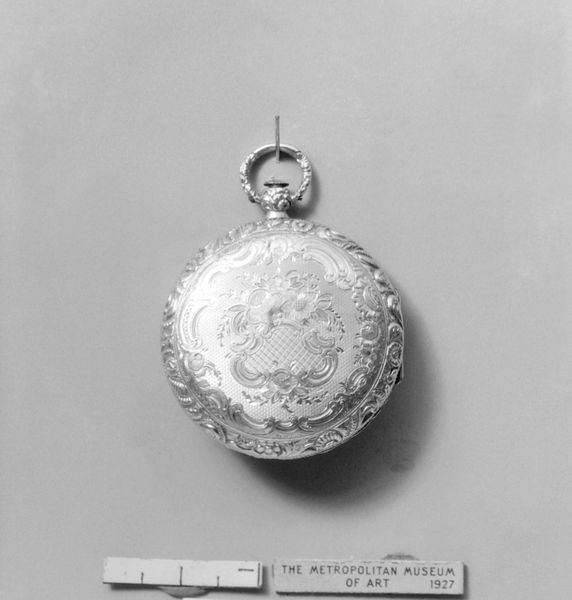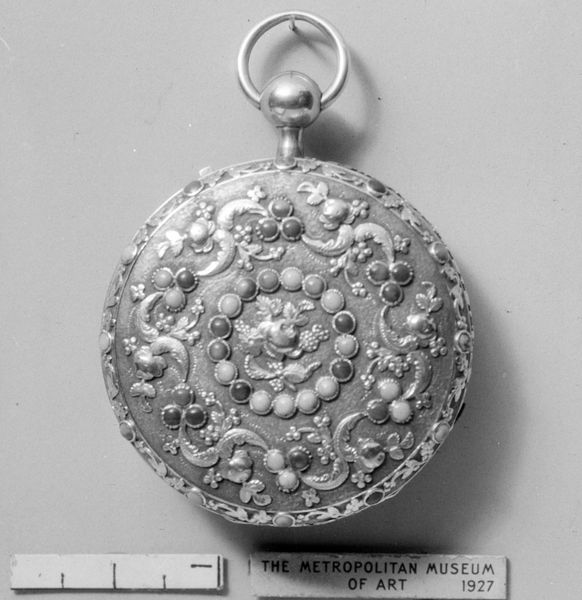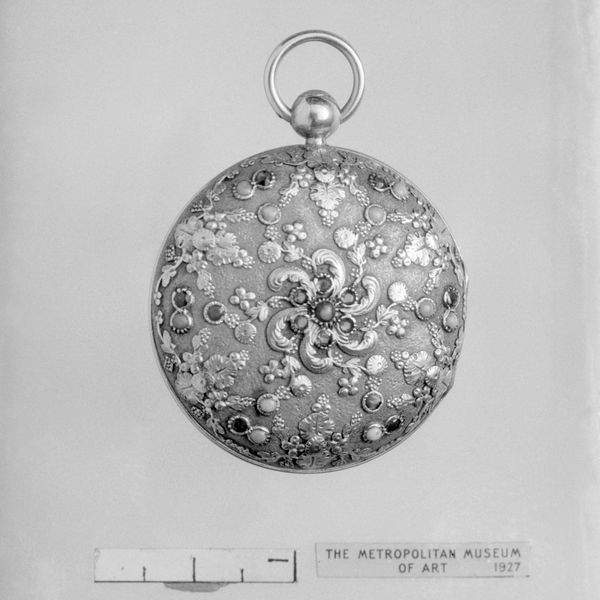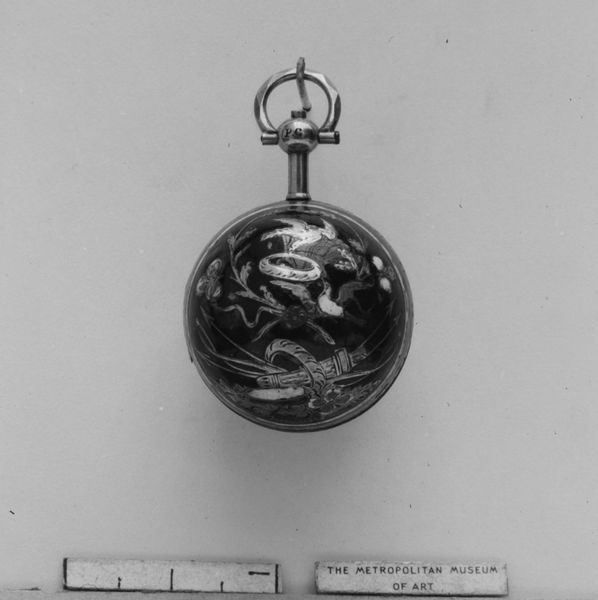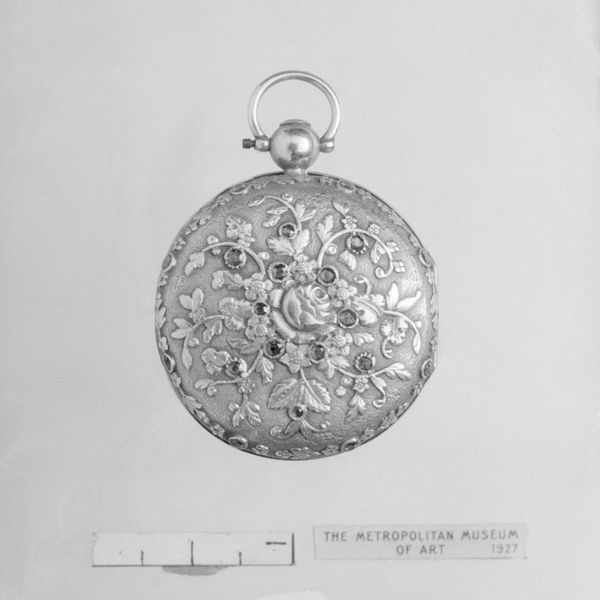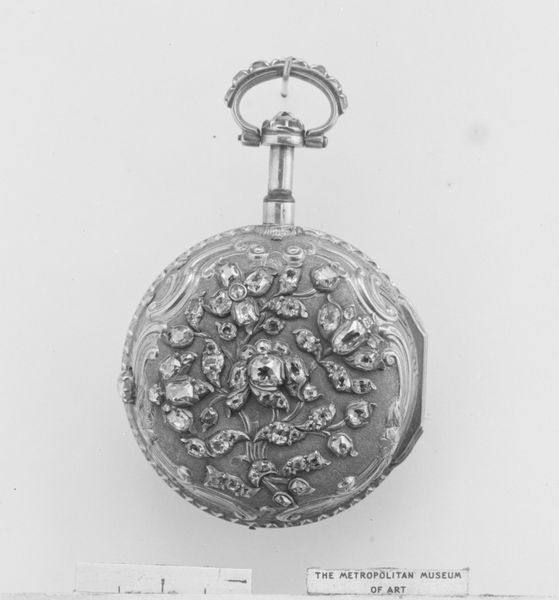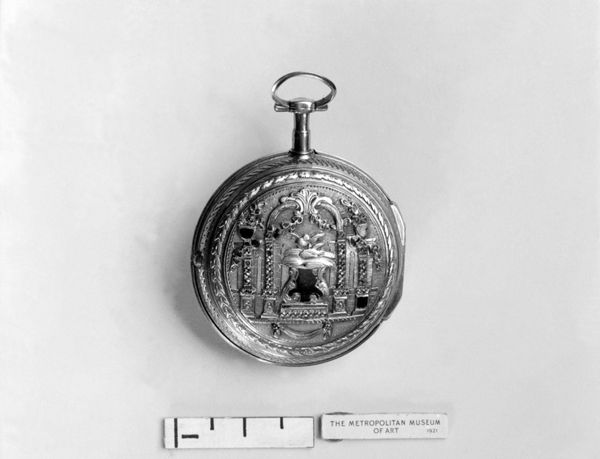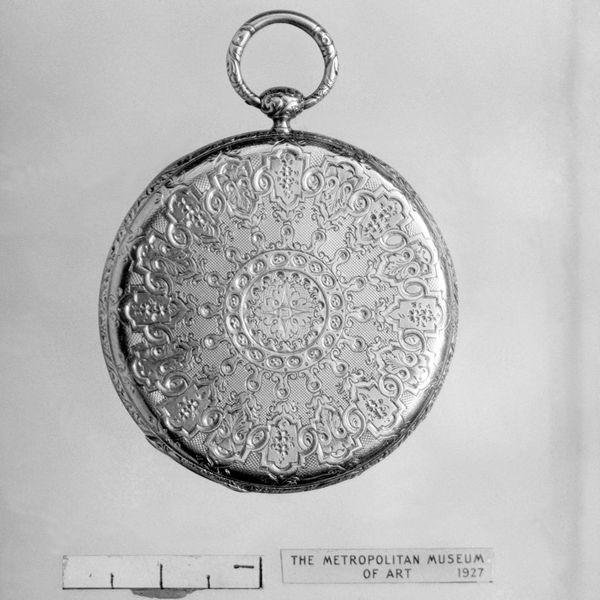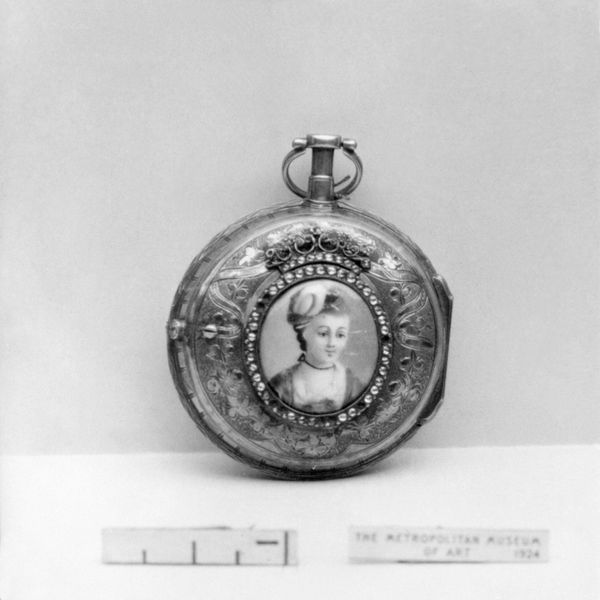
ornament, metal, sculpture
#
ornament
#
metal
#
sculpture
#
sculpture
#
romanticism
#
decorative-art
Dimensions: Diameter: 1 5/8 in. (4.1 cm)
Copyright: Public Domain
Editor: So, here we have a metal watch, dated around 1810 to 1835, by the Firm of Bordier Frères. It's covered in incredibly detailed floral ornamentation. The craftsmanship is exquisite, but almost overwhelming, and I can only imagine the money one would spend to own one of these. What does this type of elaborate piece say about society at that time? Curator: It's a fascinating object precisely because it speaks to so much more than just telling time. Think about the Romanticism period and its decorative arts. How does this piece embody broader social values and aspirations? Consider what it meant to publicly display this type of piece. Editor: So it wasn’t just about knowing what time it was; it was about showing off your status? Almost like a walking billboard. Curator: Exactly. These watches acted as highly visible markers of social status and access to global trade networks, displaying considerable resources for elaborate artisanship. To have and publicly display that ornament was making a social, if unspoken, assertion. Editor: I guess I never thought about timepieces being statements of social class. But seeing all the detailed labor involved changes my perception entirely. I now view time quite differently, as something measured not only by hours but also by status. Curator: Precisely. And who dictates this, and for what socio-political purposes? Editor: It makes me wonder, who were the Bordier Frères creating this for, and who today keeps these narratives alive by choosing which art we see displayed in museums? It also gives the concept "wasting time" a whole other social meaning. Thanks for illuminating the story here. Curator: My pleasure; seeing the power of ornamentation offers insights into the cultural forces shaping our past and present perceptions of status and power.
Comments
No comments
Be the first to comment and join the conversation on the ultimate creative platform.
